
Cold temperatures will continue across much of the eastern U.S. into today. Heavy lake effect snow continues into today east of Lakes Erie and Ontario. Two Pacific cold fronts will cross the Pacific Northwest early this week followed by another atmospheric river. Heavy rain and gusty winds are expected through midweek, with the potential for renewed urban and river flooding. Read More >
If the below images are not up to date, you can access the latest forecast in this Viewer.
For hourly values, see our Forecast Points website.
Important: The WBGT color scale/categories on the above pages may differ from the ones shown here. Always reference the numerical values on those pages, not just the colors.
Local WBGT Forecast Maps
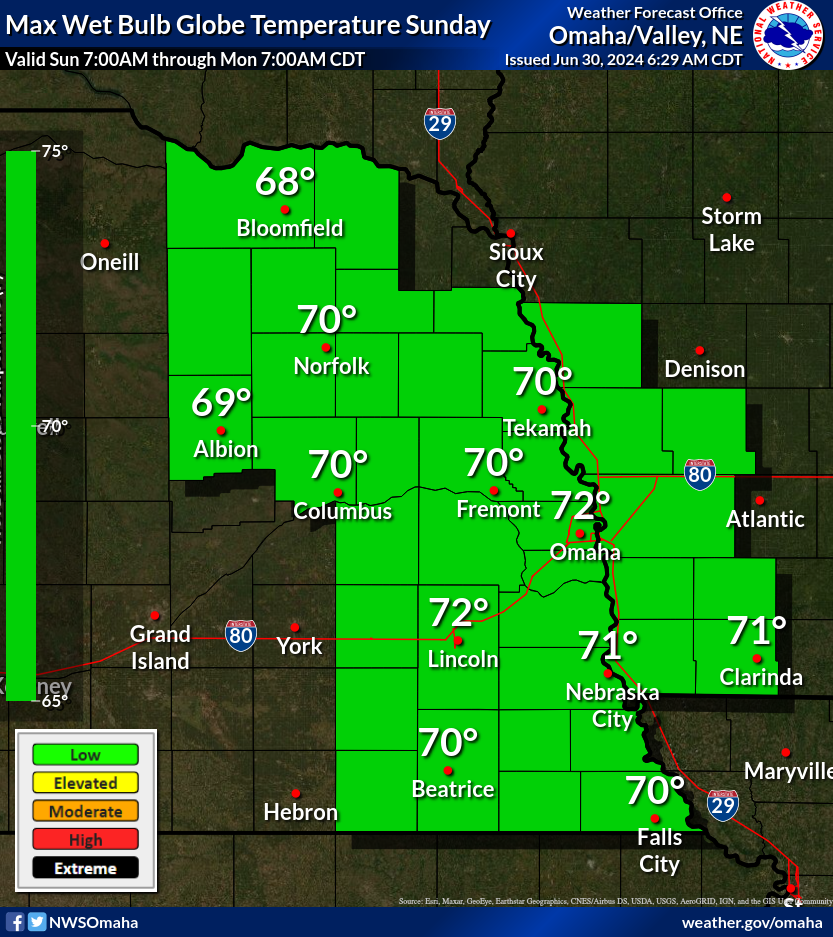
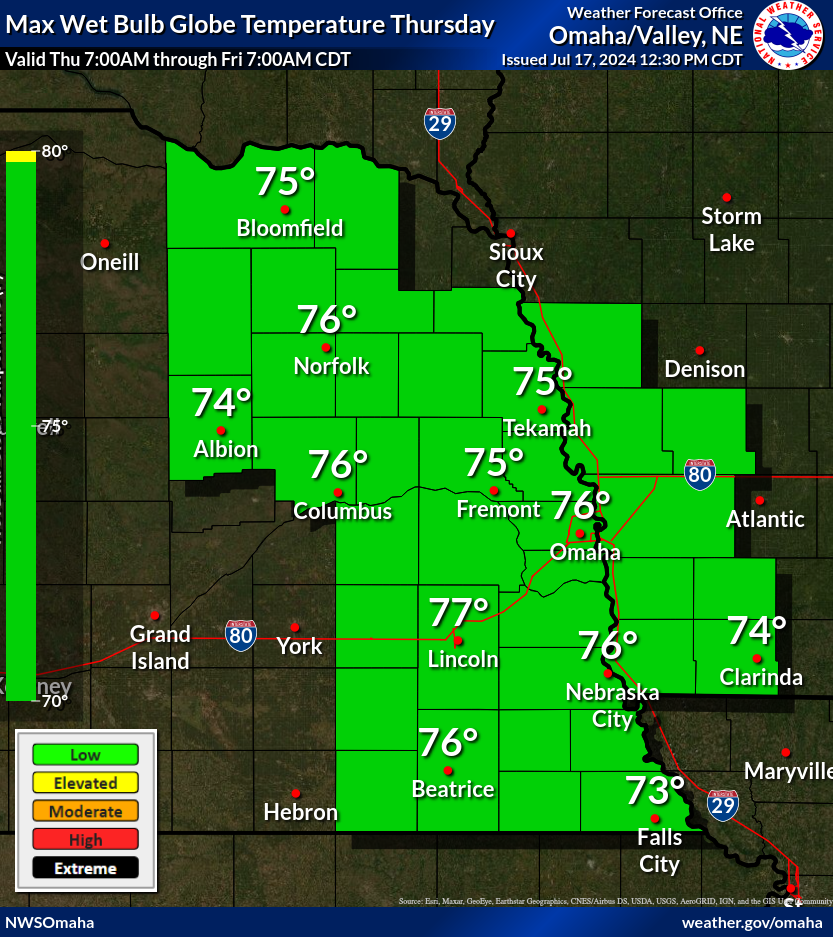
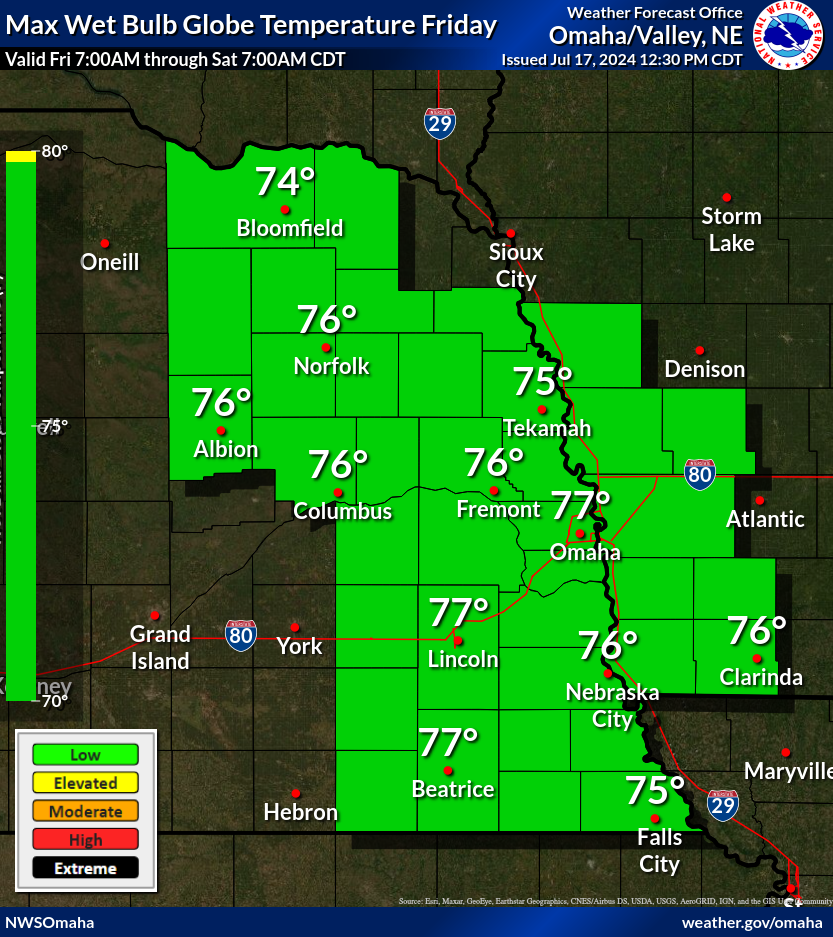
Nebraska WBGT Forecast Maps
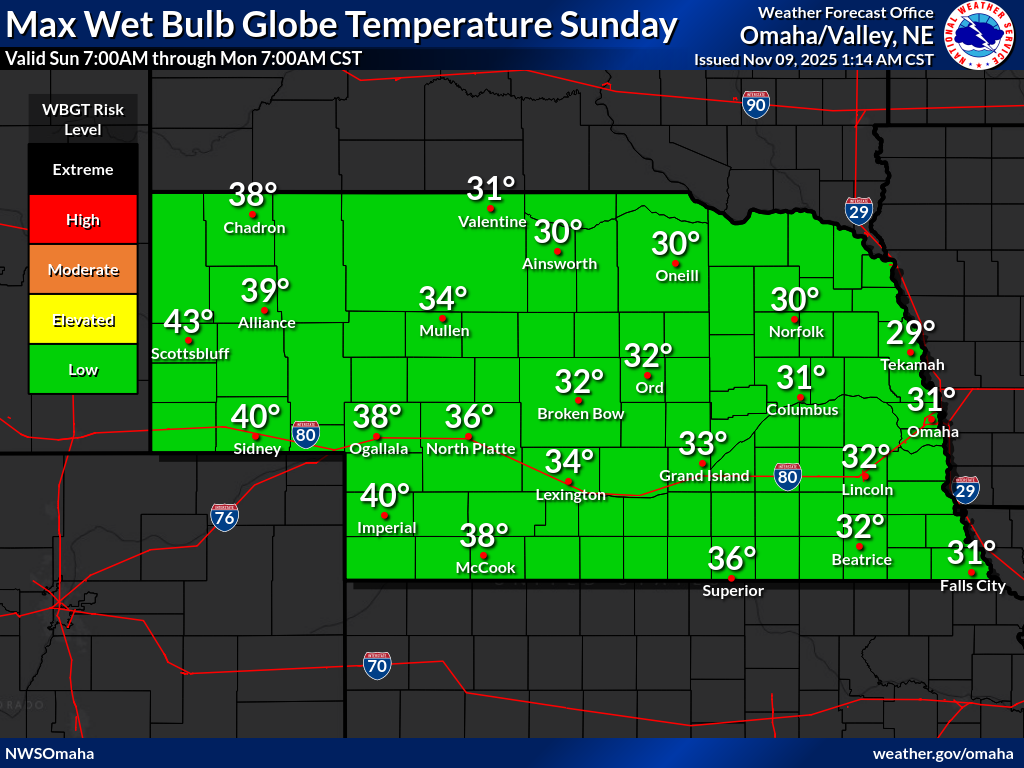
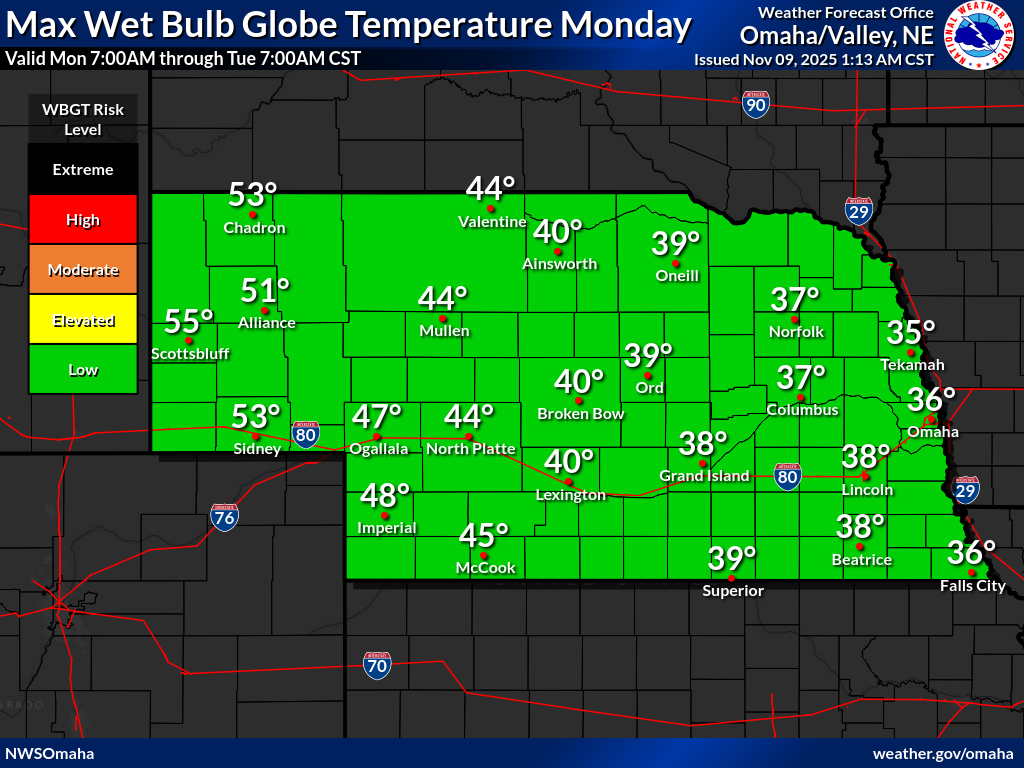
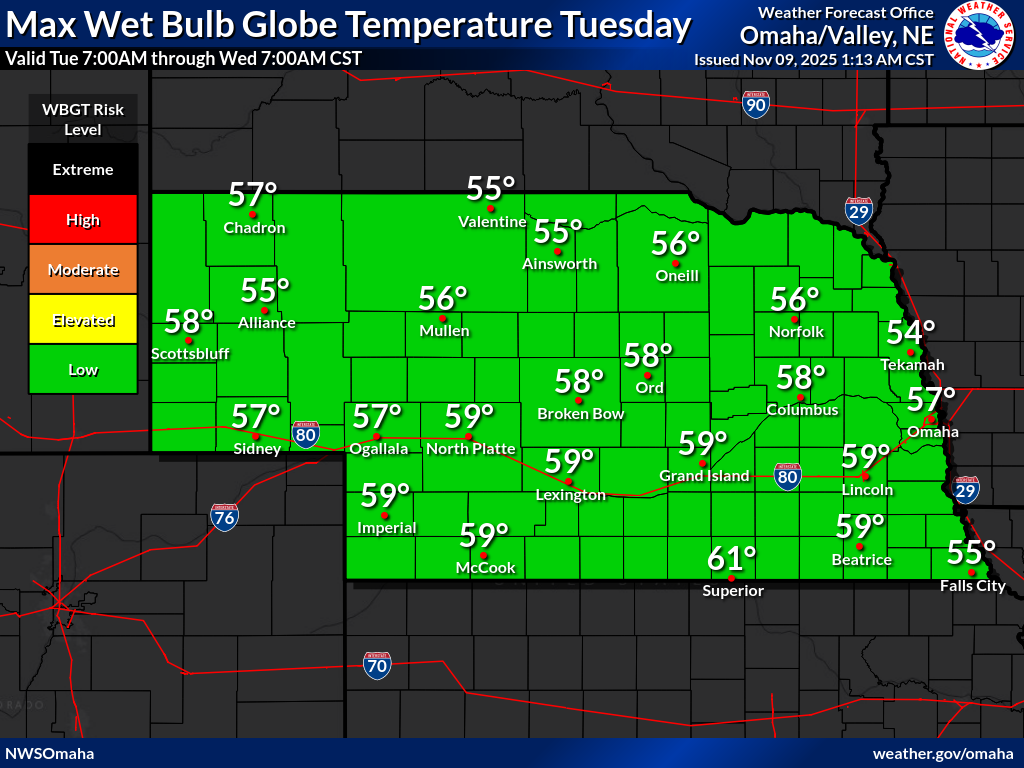
NSAA Wet Bulb Globe Temperature (WBGT) Guidelines
The NSAA Board of Directors approved the Wet Bulb Globe Temperature (WBGT) as the recommended measurement practice and device for measuring acceptable heat/ humidity levels for practices and contests. The use of WBGT is recommended throughout the calendar year when the ambient temperature is above 80°.

| Region 1 | Region 2 | Activity Guidelines |
|---|---|---|
| <76.1 | <79.7 |
Normal activities 3 separate - 3 to 5 minute rest / water breaks per hour |
| 76.2-81 | 79.8-84.6 |
Use discretion for intense / prolonged practice 3 separate - 4 to 6 minute rest / water breaks per hour Monitor at risk athletes closely Cold water immersion available |
| 81.1-84 | 84.7-87.6 |
Maximum practice time is 2 hours Helmets and shoulder pads only Remove helmets and shoulder pads if conditioning 4 separate - 4 to 6 minute rest /water breaks per hour Monitor at risk athletes closely Cold water immersion available Contests: Per NFHS rules, implement additional/extended timeouts for rest / water breaks |
| 84.1-86.1 | 87.7-89.7 |
Maximum practice time is 1 hour Helmets and shoulder pads prohibited No conditioning 4 separate - 5 to 7 minute rest / water breaks per hour Monitor at risk athletes closely Cold water immersion available Contests: Per NFHS rules, implement additional/extended timeouts for rest / water breaks Contests: Consider delaying / postponing start times |
| >86.1 | >89.7 |
No outdoor activities Cancel or delay outdoor practices / contests until lower WBGT is observed. |
Use the map below and sliders to calculate the wet bulb globe temperature for a location and parameter values of your choosing.
|
|
|
|||||||||||||||||||||||||||||||||||||
Wet Bulb Globe Temperature vs. Heat Index
While the WBGT and Heat Index both attempt to describe how "hot" it is and the potential for heat related stresses, they go about it in different ways.
Heat Index is more commonly used and understood by the general public - the higher the values the hotter it's going to feel and the higher the threat for heat related illnesses. It's calculated from the temperature and relative humidity. What's not commonly known is that Heat Index assumes you are in the shade.
WBGT also uses the temperature and humidity in its calculation, but temperatures are measured in direct sunshine. It also factors in wind speed, sun angle, and cloud cover.
What value should you use? For day-to-day activities, heat index will serve you well. If you work outside or plan on any sort of vigorous outdoor activity in the full sun, use the WBGT.
Comparing WBGT and Heat Index
|
Examples
|
| WBGT | Heat Index | |
|
Origins: The WBGT date back to the 1950s - specifically the United States Marine Corp Recruit Depot on Parris Island, SC. There, recruits were required to perform high intensity exercise in a high humidity, high temperature environment. Many soldiers succumbed to heat related illness. In response, a joint effort between the Department of the Navy and Army doctors studied the effects of heat on exercise performance. The result was the WBGT. WBGT uses several atmospheric variables for its calculations: temperature, humidity, wind speed, sun angle, and cloud cover. Temperatures are measured in the sunlight. The military uses the WBGT to gauge the potential for heat related stresses to this day. OSHA and many nations also use the WBGT as a guide to managing workload in direct sunlight, as do athletic departments (college and high school) and events. If you work or exercise in direct sunlight, this is a good element to monitor. |
Origins: The Heat Index is based on work carried out by Robert G. Steadman in 1979 ("An Assessment of Sultriness, Parts I and II") where he discussed factors that would impact how hot a person would feel under certain conditions. The National Weather Service developed a "simplified" formula from this work using air temperature and relative humidity as the two inputs. This formula became the "heat index". It is important to note that the heat index is calculated for shady areas. Direct sunlight can add as much as 15 degrees to the heat index. |
|
Inputs:
|
Inputs:
|
|
|
Equation: WBGT=0.7Tw+0.2Tg+0.1Td
|
Equation: Heat Index = -42.379 + 2.04901523T + 10.14333127R – 0.22475541TR – 6.83783(10-3T2) – 5.481717(10-2R2) + 1.22874(10-3T2R) + 8.5282(10-2TR2) – 1.99(10-6T2R2)
|